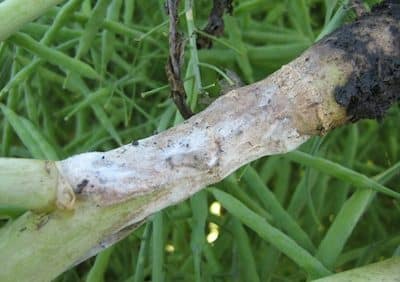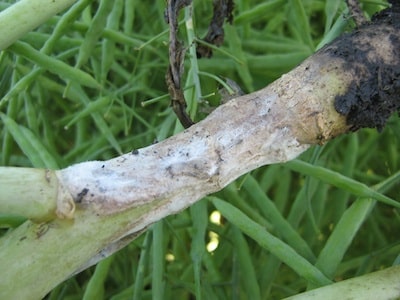
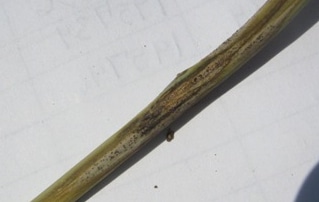
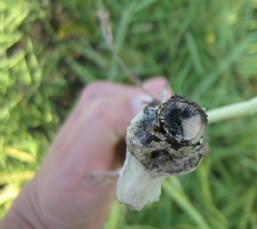
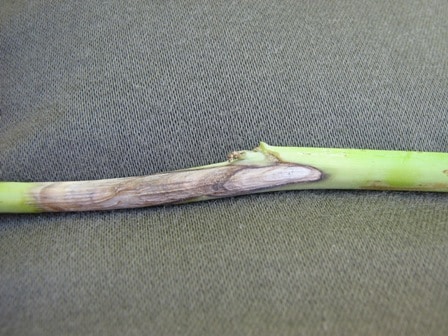
Some regions are reporting higher rates of blackleg and most regions are seeing sclerotinia stem rot damage. Fungicide is not effective at this stage of the season, but the weeks leading up to harvest are a good time to scout. Large lesions — the ones that will lead to yield loss — are easy to see on green stems. Its important to know which disease is present in order to plan rotations and varieties for next year. If the disease is blackleg, rotation will help. If the disease is sclerotinia, rotation may not help but growers could look at sclerotinia-tolerant varieties and consider how to improve their scouting and fungicide program for next year.
Sclerotinia: Look for fuzzy rot on the lower branches. The plant may look healthy at the base, but there will be dead branches. Infected branches will have white-grey tissue (not green) and will often start to shred apart.
Blackleg: Symptoms showing up at this stage of the season are greyish lesions on the stem with the black picnidia specks, and also basal lesions — which are the most serious. Basal lesions can’t really be properly identified until you cut through the base of the stem and look for greyish infection. (See the photo above.) This infection will eventually grow through the stem, cutting off nutrient flow. If you see plants drying up, cut a few open to check. Also, pull them up to check for clubroot.
Sixteen virulent races of blackleg are known to exist on the Prairies, but the potential for many more to exist is there. Varieties with R ratings for blackleg have performed well against the races of blackleg that were prevalent in the field plots where they were tested as part of the registration process, but should not be expected to carry resistance to all possible blackleg races. By using tight rotations, minor races could become major races in a given field if commonly-grown varieties are not resistant to them. With tight canola rotations, we can expect minor blackleg races to be selected and cause potential yield loss if the varieties used are susceptible to those races.
Click here for a comprehensive article on blackleg in Volume 4 of Prairie Soils and Crops: Scientific perspectives for innovative management. This electronic publication put together by Guy Lafond and Neil Harker, Agriculture and Agri-Food Canada, provides producers with high quality, unbiased information on soil and crop management, authored by prairie agricultural researchers and other experts. The articles are referenced with the most pertinent scientific papers to allow the reader the opportunity to learn more about the topic. To register so you can be notified when new articles are added, click the “Register for Alert” button in the yellow banner at the top.

